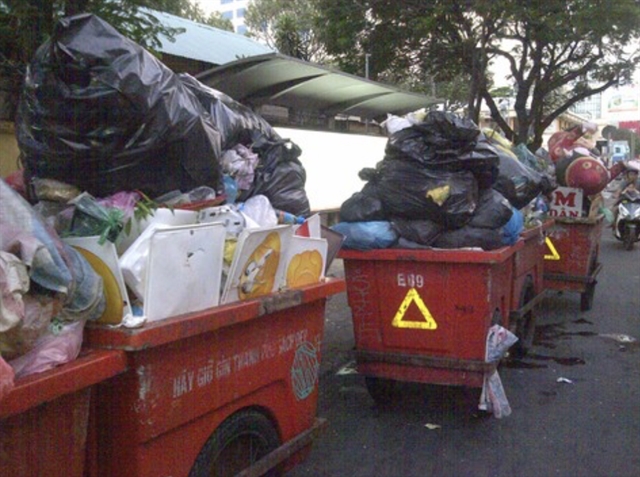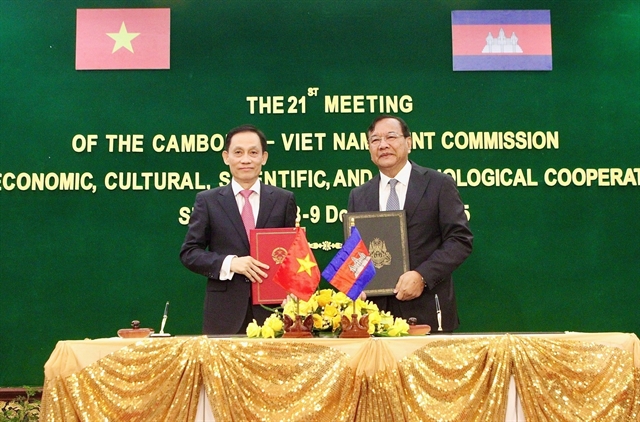 Society
Society

 |
| Waste classification at source in HCM City need more instruction to the people. Photo: congan.com.vn |
HCM CITY - The 2020 Environmental Protection Law requires, starting from January 1, 202, that domestic solid waste to be classified into three categories: recyclable waste, food waste, and other household waste.
However, nearly two months have passed, and the implementation of waste classification in HCM City has not been able to get on track due to many difficulties.
Previously, waste collection was carried out through two main channels including the public system and the private sector.
The city's public system handles about 40 per cent of daily solid waste volume while the private sector, including companies, cooperatives and individuals, accounts for the rest.
Since the beginning of this year, the city required citizens and waste collector units to classify waste at source, but the result has still not been consistent across the city.
According to records, many localities have not yet implemented regulations on waste classification at source. There are still many cases of waste not being classified at source in residential areas.
The lack of specific instructions on how to classify waste has left many people confused, and some have not even heard of this regulation.
Huỳnh Thị Hồng Hà from District 3 said that at a meeting of the residential group, she and many other people did not receive notice about the regulations on waste classification at source.
Meanwhile, garbage collection units themselves do not remind people about waste classification. These units still carried out their tasks as usual, gathering all types of waste into one bag and then putting them on a vehicle to transport them to the garbage collection point, Hà said.
In addition, some people feel that garbage classification is not feasible due to the low awareness of the citizenry.
Hoàng Kim Hương from District 8 said that a few years ago, the neighbourhood where she lives promoted waste classification at source to residents. However, she found that the implementation has not been effective so far because only a few people in the neighbourhood classify waste at source.
Currently, many large urban areas such as Vinhomes and Hà Đô Centrosa have arranged waste bins labeled as organic, recyclable and hazardous to help residents get into the habit of sorting waste at source.
However, many apartment buildings still use a system of garbage pipes that are concentrated in a storage room in the basement. This makes it ineffective for residents to sort waste in their apartments.
Nguyễn Thị Vân Anh, who lives in Mizuki Park, Bình Chánh District, told Vietnamnews that there are still no regulations on waste sorting at source in her area, and household waste is still put into one bag and then taken out and thrown into a large trash bin on each floor of the apartment building.
Hà Huỳnh Hồng Thu of Tân Bình District said that when they learned about the regulations on waste classification, people in the residential area where she lives were very excited to follow the regulations, dividing the waste into three types in three different bags.
However, when the workers came to collect the waste, they put all the bags in one undivided truck to transport it away. This made her and her neighbours disappointed.
Waste classification was then gradually forgotten because people felt it was ineffective, she added.
In Ho Chi Minh City parks such as 23/9, 30/4 and Tao Dan, most of the trash bins only have one common compartment to hold all the waste, from leaves, plastic cups and paper bags to leftover food.
In many other public areas such as shopping centres, entertainment areas, and food and beverage establishments, only undivided trash bins are available, and collection vehicles are mostly single-compartment trash trucks, without the function of classification.
On the other hand, although some roads have arranged classified trash bins, people still do not classify waste. Different types of waste are still thrown together regardless of whether the trash bins are divided into compartments or not.
According to the department, the volume of domestic solid waste in the city is currently increasing to about 10,000 tons per day.
In addition to Đa Phước landfill, the city also has solid waste treatment plants operated by VietStar Joint Stock Company, and Tâm Sinh Nghĩa Investment and Development Joint Stock Company while Landfill No. 3 is operated by the City Urban Environment Company Limited.
In addition, the city has been implementing the parallel investment and upgrading of existing solid waste treatment plants.
According to experts, the city needs to provide detailed instructions on how to classify each group of waste, clearly explain the concept and characteristics of each type to make it easier for the majority of people to understand; fully equip specialised means of transport to control the collection and treatment process well to avoid mixing different types of waste.
In addition, there needs to be close coordination between the government, functional agencies, people and social organisations, ensuring infrastructure for waste classification and treatment. At the same time, it is necessary to build a camera surveillance system in public areas and increase community participation in monitoring and detecting violations.
Sharing about the difficulties, the Department of Natural Resources and Environment of HCM City said that the process of sorting at source and treatment still faces many obstacles.
Specifically, the implementation of this issue is currently only being piloted by localities. VNS




